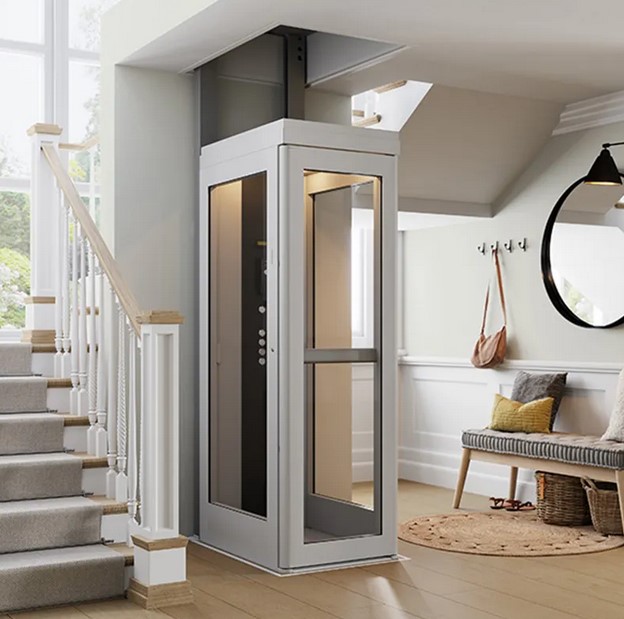We Maintain Lifts to the Greatest Standards: Reliable Solution for All Lift Types
We Maintain Lifts to the Greatest Standards: Reliable Solution for All Lift Types
Blog Article
Exploring the Globe of Lifts: Usual Problems Dealt With by Numerous Lift Mechanisms
As we browse through the upright transport systems of modern-day buildings, lifts stand apart as a vital element of our every day lives. However, behind their smooth procedure exists a world of elaborate systems that can occasionally experience obstacles. From hydraulic elevators to grip systems and machine-room-less styles, each lift type includes its collection of common problems. Understanding these difficulties is vital for making certain the smooth performance of these essential systems. Allow's check out the complexities that underlie the operation of elevators and the potential problems that can develop, clarifying the complex web of lift mechanisms.
Hydraulic Lifts
Hydraulic lifts, commonly favored for low-rise structures, utilize fluid stress to manage the motion of the elevator cars and truck (lift repair companies). This mechanism involves a hydraulic pump pushing oil right into a cylinder, causing the elevator to move in the desired direction. While hydraulic lifts are known for their smooth and silent procedure, they do include their very own collection of typical concerns
One common trouble with hydraulic lifts is oil leak. The seals in the hydraulic system can use out over time, resulting in oil seepage. If left unaddressed, this not only develops a mess however can also influence the elevator's performance. Furthermore, concerns with the control system, such as malfunctioning shutoffs or a malfunctioning pump, can cause interruptions in the lift's activity.
Regular maintenance and punctual fixings are vital to ensure the smooth performance of hydraulic elevators. By dealing with these common problems proactively, building owners can lessen downtime and make sure the safety and security and effectiveness of their upright transportation system.
Grip Elevators
When considering vertical transport systems in buildings, one more common type aside from hydraulic elevators is the traction lift. Traction lifts operate using a system of ropes and counterweights that relocate the elevator vehicle by gripping onto the hoist ropes. This device permits smoother and much faster upright transport compared to hydraulic systems.
Among the typical issues dealt with by grip lifts is rope wear. The constant movement of the ropes within the traction system can lead to tear and wear in time, potentially causing the elevator to malfunction or end up being harmful for use. Routine evaluations and upkeep of the ropes are necessary to ensure the elevator's appropriate functioning and safety and security.
One more issue that grip elevators may experience is connected to the control system. Troubles with the control system can bring about concerns such as unpredictable activity, hold-ups in action times, or also total shutdowns. Regular testing and upkeep of the control system are essential to stop such problems and make sure the elevator's integrity.
Machine-Room-Less (MRL) Lifts

Among the vital components of MRL elevators is the small lift companies in London gearless traction maker that is set up within the hoistway. This equipment successfully drives the elevator cars and truck without the requirement for bulky devices located in typical traction lifts. Additionally, MRL lifts normally use a counterweight system to stabilize the car, more improving their energy effectiveness.
Regardless of their advantages, MRL elevators might deal with obstacles connected to repair and maintenance because of the restricted area for equipment installation. Ease of access for servicing parts within the shaft can be limited, requiring specialized training for professionals. Correct maintenance schedules and routine assessments are important to make certain the continued smooth operation of MRL elevators.
Overloading and Weight Restriction Issues
Straining and weight restriction concerns are crucial issues in elevator operations. Elevator manufacturers style lifts with particular weight capacities to ensure guest safety and security and tools long life.
When lifts are overloaded, it puts excessive pressure on the motor, cable televisions, and various other elements, potentially creating breakdowns or break downs. If they find excess weight, safety and security mechanisms such as sensors and overload sensing units are in area to protect against elevators from moving. In addition, surpassing weight limits can cause enhanced energy consumption and damage on the elevator system.
To minimize overwhelming issues, developing managers should prominently show weight restrictions in lifts and enlighten occupants on the relevance of adhering to these constraints - lift repair companies. Routine upkeep checks by certified service technicians can additionally aid ensure that lifts are operating within risk-free weight criteria. By attending to overloading and weight limitation concerns proactively, building owners can improve lift safety and effectiveness
Electrical System Failings
Exceeding weight limits in lifts can not only lead to mechanical problems but additionally potentially add to electrical system failings within the lift framework. Electric system failings are a critical issue in lift procedure, as they can create unexpected shutdowns, malfunctions, or even security dangers.
Regular maintenance and evaluations are important to determine and deal with potential electric problems promptly, ensuring the effective and risk-free operation of lift systems. By adhering to weight limitations and conducting regular electrical system checks, building proprietors can reduce the threat of electrical failings in lifts.
Final Thought

Hydraulic elevators, commonly favored for low-rise structures, utilize fluid pressure to manage the activity of the elevator automobile.When thinking about upright transportation systems in buildings, one more common type aside from hydraulic lifts is the grip elevator. Grip lifts operate utilizing a system of ropes and counterweights that move the elevator cars and truck by clutching onto the hoist ropes. Unlike typical lifts that require a separate device space to house the equipment, MRL elevators integrate many we maintain lifts of the elements within the shaft, eliminating the need for a committed device room.In final thought, lifts face typical problems such as hydraulic malfunctions, traction system failures, and electric system issues.
Report this page